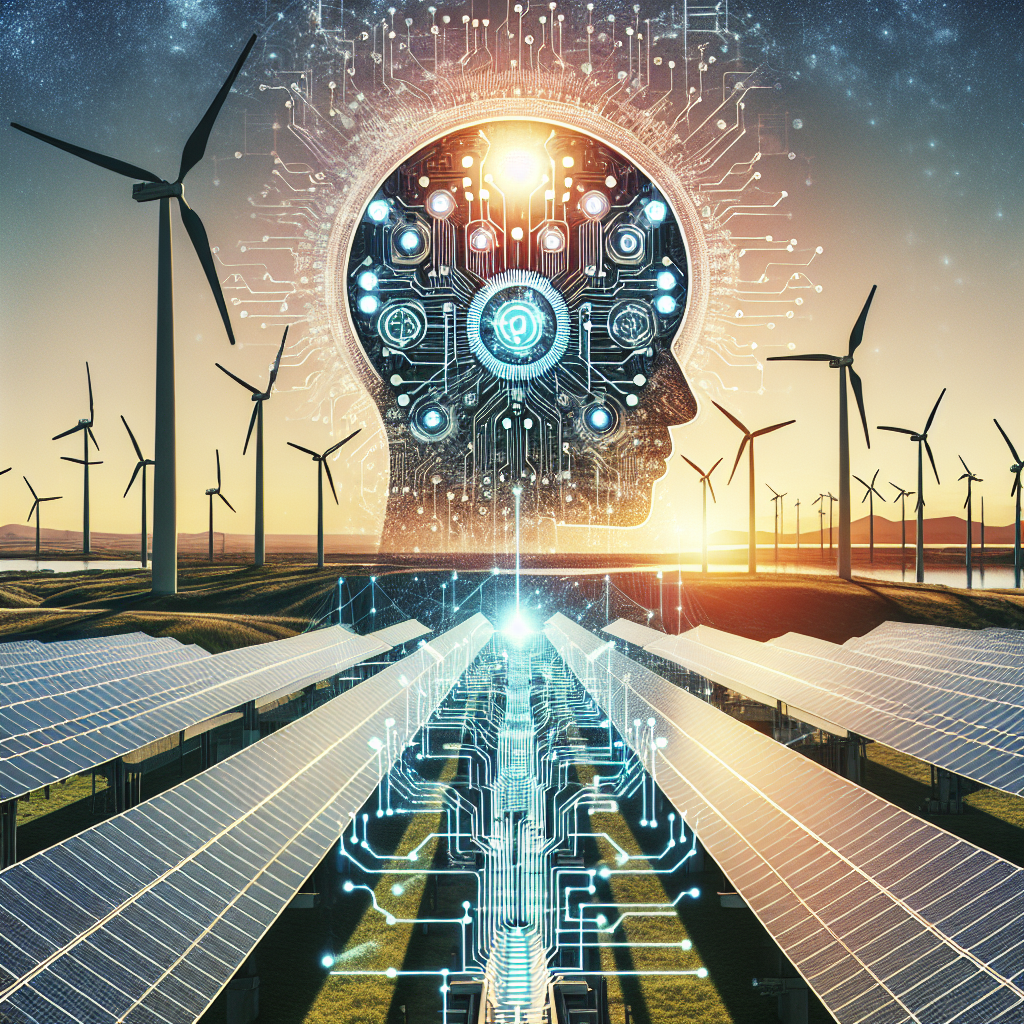In recent years, the world has seen a significant shift towards renewable energy sources as a means of reducing our reliance on fossil fuels and combating climate change. Renewable energy sources such as solar, wind, and hydroelectric power have become more prevalent, but integrating them into existing energy grids can be challenging. This is where artificial intelligence (AI) comes in.
AI has the potential to revolutionize the way we generate, store, and distribute renewable energy. By harnessing the power of AI, we can optimize the efficiency and reliability of renewable energy grids, making them more sustainable and cost-effective. In this article, we will explore how AI is being used to enhance renewable energy grids and address some common questions about this emerging technology.
How AI is Enhancing Renewable Energy Grids
1. Predictive Maintenance: One of the key ways AI is being used to enhance renewable energy grids is through predictive maintenance. By analyzing data from sensors and other sources, AI can predict when equipment is likely to fail and proactively schedule maintenance before problems occur. This can help prevent costly downtime and ensure that renewable energy systems are operating at peak efficiency.
2. Energy Forecasting: AI can also be used to improve the accuracy of energy forecasting for renewable energy sources such as solar and wind power. By analyzing historical data and weather patterns, AI algorithms can predict how much energy will be generated at a given time, allowing grid operators to better balance supply and demand.
3. Grid Optimization: AI can help optimize the operation of renewable energy grids by adjusting power flows, managing energy storage systems, and coordinating the integration of different renewable energy sources. This can help reduce costs, increase efficiency, and improve the stability of the grid.
4. Demand Response: AI can also be used to implement demand response programs that encourage consumers to reduce their energy usage during peak times. By analyzing data from smart meters and other sources, AI algorithms can identify opportunities to shift energy consumption to off-peak hours, reducing strain on the grid and lowering overall energy costs.
5. Asset Management: AI can help asset managers optimize the performance of renewable energy assets such as solar panels and wind turbines. By analyzing data on energy production, maintenance schedules, and other factors, AI algorithms can identify opportunities to improve asset performance and extend their lifespan.
FAQs
Q: How does AI improve energy forecasting for renewable energy sources?
A: AI algorithms can analyze historical data on energy production, weather patterns, and other factors to predict how much energy will be generated by renewable sources such as solar and wind power. This can help grid operators better balance supply and demand, reducing the need for backup power sources.
Q: Can AI help reduce the cost of renewable energy?
A: Yes, AI can help reduce the cost of renewable energy by optimizing the operation of renewable energy grids, improving the efficiency of energy production, and reducing maintenance costs through predictive maintenance. This can make renewable energy more competitive with fossil fuels.
Q: How does AI help optimize the operation of renewable energy grids?
A: AI algorithms can adjust power flows, manage energy storage systems, and coordinate the integration of different renewable energy sources to optimize the operation of renewable energy grids. This can help reduce costs, increase efficiency, and improve the stability of the grid.
Q: What are some challenges to implementing AI in renewable energy grids?
A: Some challenges to implementing AI in renewable energy grids include data quality issues, privacy concerns, and the need for specialized expertise to develop and deploy AI algorithms. However, these challenges can be overcome with proper planning and investment.
Q: How can AI help asset managers optimize the performance of renewable energy assets?
A: AI algorithms can analyze data on energy production, maintenance schedules, and other factors to identify opportunities to improve the performance of renewable energy assets. This can help asset managers maximize energy production, reduce maintenance costs, and extend asset lifespan.
In conclusion, AI has the potential to revolutionize the way we generate, store, and distribute renewable energy. By harnessing the power of AI, we can optimize the efficiency and reliability of renewable energy grids, making them more sustainable and cost-effective. As the world continues to transition towards renewable energy sources, AI will play an increasingly important role in shaping the future of our energy systems.

